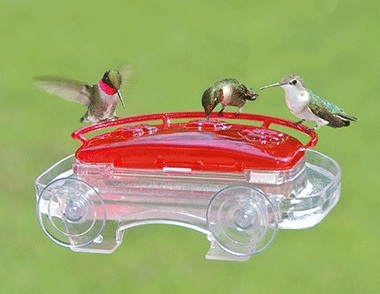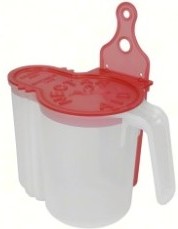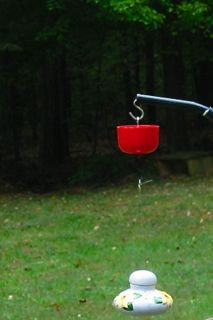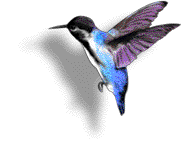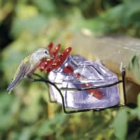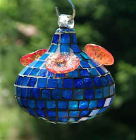-
What’s Really in Your Window Hummingbird Feeder?
Got a new window hummingbird feeder? Please fill it with the good stuff… read on:
One of the biggest myths about feeding hummingbirds is their food needs to be red. That one, along with leaving feeders up in fall will deter the birds from migrating. Neither are true, and the former may actually be hazardous to the tiny sprite’s health. Although no formal studies have been done to prove red dye #40 is not safe for hummingbirds… none have been conducted to say that it’s safe either!
Confirmed in Julie’s Zick’s recent blog post (yeah… she’s an expert) she’s got an interesting view on the subject: http://juliezickefoose.blogspot.com/2015/04/red-alert-for-hummingbirds.html
We’ve been encouraging folks to make their own nectar for years. Not only extremely economical, we believe hummingbirds prefer the home made solution over commercial mixes. 1 cup of sugar to 4 cups of water… it couldn’t be simpler!
Should you have any doubts or fears upon taking this leap from store-bought to home made, check out the new Nectar Aid. It’s the absolute easiest (and foolproof) way to make your own hummingbird or oriole nectar. Measure, mix and store it using one container, even the stirrer’s included!
Check out the demo video below, then watch some tiny sprites in action at this fun window hummingbird feeder!
-
It can’t be time for the ant moat yet?
Dry, dry, dry, it’s been a hot and dry start to summer in the Southeast, which means crawlies of all sorts are already seeking moisture. Pastures are starting to turn crispy as the lush grasses of spring fade away. Sticky nectar solutions we use to lure hummingbirds are always a major attraction for ants, who can become a real nuisance to birds and humans. The tiny sprites just don’t like ants in their nectar… period!
Not only for hummingbird feeders, you can protect oriole, butterfly, and fruit & jelly feeders easily with an ant moat. It will fend off pesky ants by blocking their path with water – because ants can’t swim. The vessel must have water to function properly! No water-no moat-get ants 🙁
Another option is to dab some petroleum jelly on the hook or bracket of the feeder. This works okay for a bit… until the heat melts it and makes a mess. You’d want to be sure nothing drips into the nectar as well.
Lots of hummingbird activity in the beginning of the season seems to have slowed, and even has folks asking where they are? Because flowers and vines are still offering food sources by way of nectar, they’ll always be the first and most natural choice. Due to the harsh winter and late spring, blooms don’t seem to coincide with the time! Our cactus which usually flowers in may, is now in full bloom one month later. than normal. But come July when everything has shriveled, hummingbird activity is sure to increase once again at feeders, so don’t take them down, and do keep nectar fresh.
Pouring too much of that nectar down the drain? First, don’t fill feeders to capacity, and do try the home-made sugar water solution. It’s perfect, and we think hummingbirds prefer it over commercial mixes! No red dye needed either. This simple recipe? 1 cup plain table sugar to 4 cups water… that’s it! Boil just one cup of water to dissolve sugar, add three cups cold water, stir well… and you’re ready to fill. Store unused nectar in the fridge f
or up to two weeks.
May the tiny sprites bring a smile upon your face, and may you see lots of buzzing activity around your feeders this season!
-
Get Your Hummingbird Feeders Ready!
It’s time…the migration has begun!
Hummingbirds have got to be one of the most anticipated of all migratory birds. Their antics at feeders is entrancing, I could watch for hours. The migration from Central and South America has begun, and the first birds should start appearing in the Southwest and Southern states in a few weeks. This is an exciting time for many backyard birding enthusiasts.
It’s time then to get hummingbird feeders ready for action, by making sure they’re clean, filled with fresh nectar, and in an obvious place where hummers can see them, you’ll start seeing these flying jewels in no time.
Hummingbirds also love water…moving water that is. Whether a birdbath fountain, leaf mister, or bubbler, you can bet that moving water attracts them and keeps them coming back daily.
The quick and easy nectar recipe: 4 parts water to 1 part plain table sugar.
Never substitute anything for white cane sugar as it will harm hummingbirds. It’s not even necessary to boil the water, but it helps to dissolve the sugar quickly and effectively. Store unused nectar in the fridge, and change old nectar in feeders at least twice a week. Nectar will stay fresher longer if hung in the shade too.

